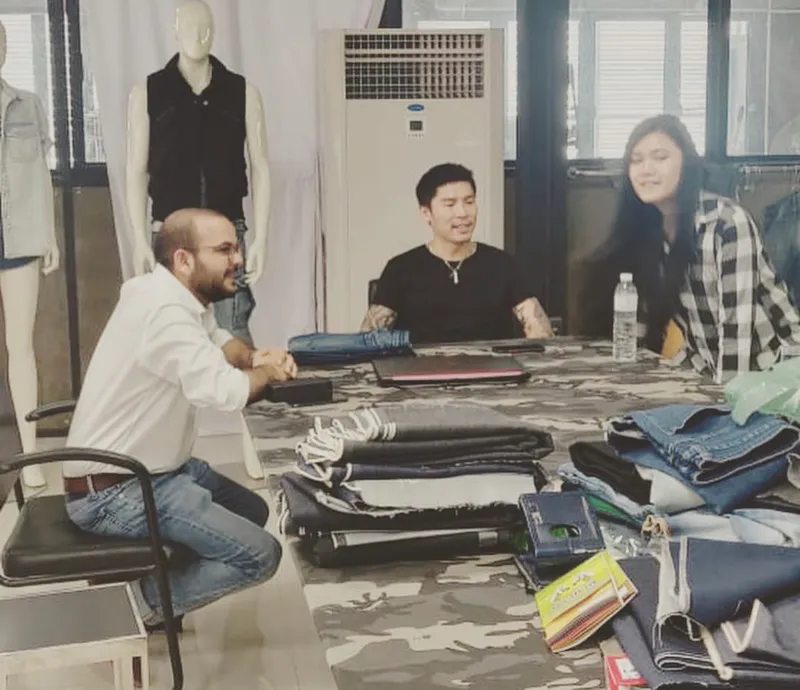How Zilingo is using tech to help its sellers stay on track with sustainability and ESG measures
Zilingo, a technology platform that powers the global supply chain with innovative trade solutions, is using digitisation to reduce defects by 50 percent, and help factories become more sustainable.
The fashion industry is notorious for its unfair employment standards and practices that aren’t always favourable and positive for the environment.
“This is mostly true, especially for fast fashion where profits have trumped any concern for the environment, reduction of greenhouse gases, or usage of organic/recycled materials,” says Aadi Vaidya, COO of Singapore and Bengaluru-based ecommerce enablement startup .
Many people are now aware that making a pair of jeans demands more than 4,000 litres of water. It is to change this – and other environmental impacts like these - that Zilingo decided to look closely at their sellers and how they can be more sustainable.

Aadi Vaidya of Zilingo during a field visit in MP
“We use digitisation to unlock pools of margin that can be invested into sustainable, environment-friendly practices. We help fashion brands minimise the environmental impact of their operations, keep track of labour practices and monitor s ustainability across the supply chain,” Aadi explains.
Microfiber, a huge group in Bangladesh that manufactures for some of the largest fashion brands globally, is a Zilingo customer. They started working with Zilingo to first digitise and light up the factory shop floor, which was their first step towards using technology to reduce defects and hence reduce wastage.
A few months on, with the power of data and technology Microfiber asked Zilingo’s trade team to help them procure sustainable fabrics to service the demands of their western customers.
“Giving a multi-geographic advantage, Zilingo opened up new suppliers for them in India, China, and Vietnam. Forty percent of their current order book with Zilingo is now organic cotton and recycled polyester,” Aadi says.
How is it being done?
The idea is to look at things from a manufacturing level and see if they can bring in any change that ensures profitability and sustainability. The main problem is an ‘obese’ supply chain.
“By that I mean having multiple middlemen in the process the supply chain has more stakeholders, thus reducing the chances of sustainability,” Aadi says.
Zilingo wants to bring the brand and the manufacturer closer. To this end, technology brings in transparency.
Aadi explains that a lot of the margins that get sucked out of the supply chain starts getting used by the people who create value. For example, the Zilingo factory is digitising the factories, which makes quality control digital.
“This reduces defects by 50 percent and the need of manpower by 30 percent. Wastage also goes down. The factory floor is more predictable and analytically driven, and orders can be placed in real time,” he says, adding that this also frees up working capital.
He adds that the team had realised that while brands and manufacturers have now started talking about ESG and sustainability, there still is a long way to go.
According to a report by a verification tool Compare Ethics, only one in five customers trusts the sustainability claims made by brands. It is high time that brands move beyond marketing and PR initiatives and walk the talk by re-evaluating their manufacturing process.
The team at Zilingo had also discovered that close to 80 percent of greenhouse gases created by the fashion industry come from the manufacturing of synthetic fabrics and close to 10 percent from logistics and shipping.
“Brands often have an outside-in approach to solving environmental issues rather than re-evaluating their manufacturing practices, which is where the real problem lies.
"We realised most supply chains in fashion (unlike say an iPhone supply chain that is squeezed for every dollar and has a playbook refined by Foxconn), are extremely archaic, middlemen-dependent, opaque, and therefore have limiting and exhausting margins,” Aadi says.

Aadi with customers in Thailand
Can tech bring sustainability and profits?
Aadi says there needs to be an incentive for brands to move towards being more sustainable and environment-friendly, and to have an employee-friendly supply chain.
“What if this technology was to enable more profits for relevant stakeholders but at the same time ensure that the supply chain starts becoming more transparent, more sustainable?”
He says that over the past 14 months there has been close to 5x more digital adoption than expected pre-COVID for digitisation. Digital enablers remove opacity and middlemen, improve speed, and lower inventory days, which frees up more margins and makes favourable changes in the bottom line.
“Other significant benefits include transparency, predictability, accountability, and traceability. All these are critical to creating any irreversible positive change in our supply chains. These dollars would be invested into better wages for staff, usage of better quality energy sources, educating and marketing with brand buyers, and eventually a more sustainable supply chain,” Aadi says.
Across the world, consumers are evolving and becoming more conscious about their purchasing decisions. If a supply chain is able to produce the same goods at the same price but with more conscious practices, it significantly improves top-line growth for all stakeholders. Reason enough for Zilingo to go all out!
Edited by Teja Lele



![[Turning point] How a visit to Thailand markets helped these entrepreneurs build ecommerce unicorn Zilingo](https://images.yourstory.com/cs/wordpress/2018/04/Zilingo1.jpg?fm=png&auto=format&h=100&w=100&crop=entropy&fit=crop)
![[Product Roadmap] How Zilingo built one of the largest tech ecosystems for retail merchants in Southeast Asia](https://images.yourstory.com/cs/2/a9efa9c02dd911e9adc52d913c55075e/Product-road-map-1600172543625.png?fm=png&auto=format&h=100&w=100&crop=entropy&fit=crop)




